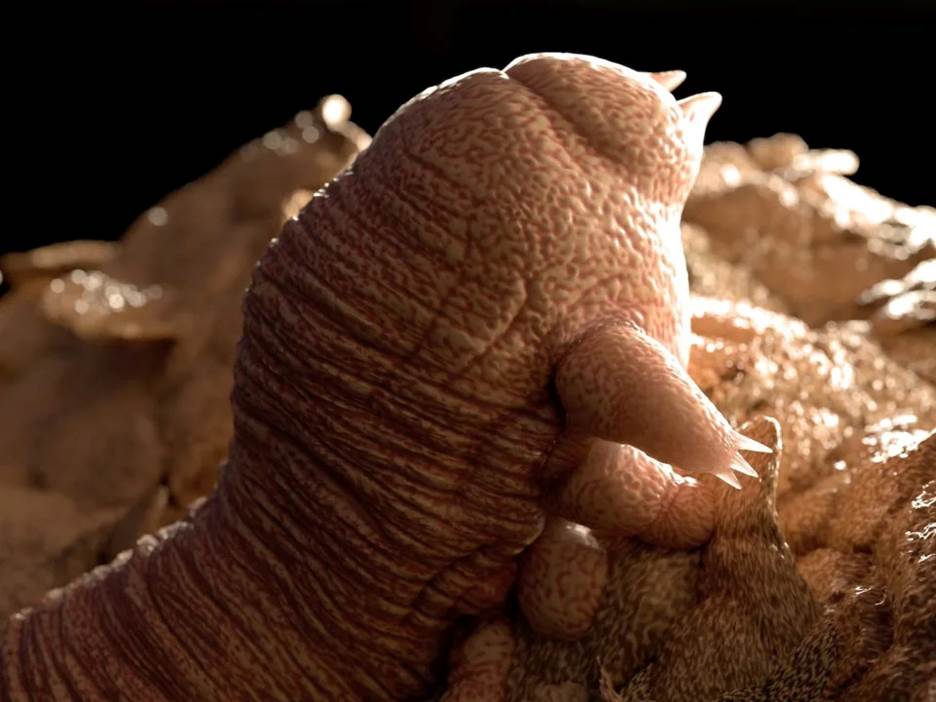
A scientist scraped a black dot on his forehead and filmed it under a microscope, revealing dozens of crawling face mites
Under a Microscope, Dozens of Crawling Mites Seen Invading the Human Face
By Erin Heger
They come out at night to mate on your face. They feast on the oil in your pores. They lay eggs in your sebaceous glands . Yikes!
They sound like something from a horror film, but these mysterious, microscopic creatures are very real.
They're called Demodex mites and they live on all mammals. If you haven't heard of them, you're not alone.
These mites are so small that most people have no idea they exist. At about 0.15 to 0.4 millimeters long , it would take several mites to cover the head of a pin.
They live their entire lives on your body and eventually die and decompose all within the pores of your face. Sound like a fun time?
Here's a closer look at what these mites look like.
Demodex mites in action
Recent video footage from scientist, James Weiss , the videographer for the YouTube channel Journey to the Microcomos and author of " The Hidden Beauty of the Microscopic World ," shows these mites in action, the way they move and their eight tiny legs wiggling around on our skin.

Here you can see the two distinct halves of the Demodex's body — at one end, the eight legs near the mouth and the other longer, slimmer end consisting of their gastrointestinal organs and genitals - . James Weiss/Journey to the Microscomsos
German dermatologist Gustav Simon first discovered Demodex in 1842.
Nearly 200 years later, scientists still aren't entirely sure why these mysterious mites exist and live on mammals — except to say we've simply evolved together over time, said Michelle Trautwein , an entomologist who studies Demodex and other anthropods and insects at the California Academy of Sciences in San Francisco.
"They're not just on us; they're on all mammals. So, they evolved initially on early mammals and they've speciated as mammals have speciated," Trautwein told Insider.
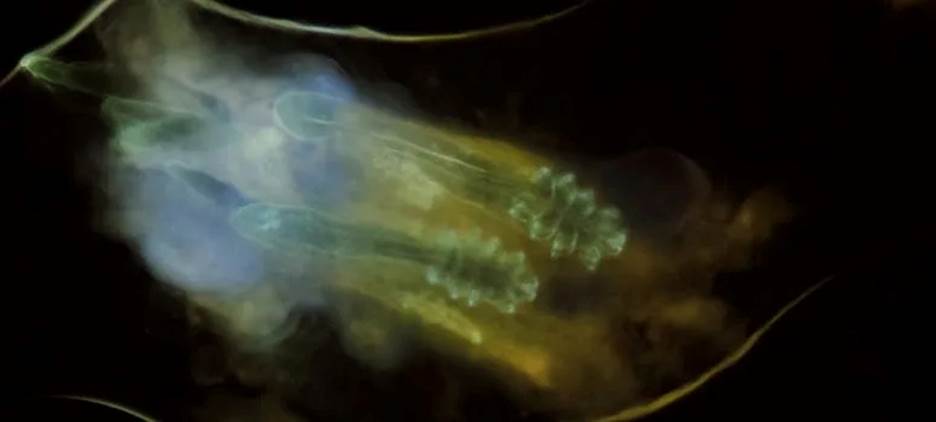
Two Demodex mites side by side - James Weiss/Journey to the Microscomsos
The fascinating footage and images of these mites featured in the YouTube video came from James Weiss' own face.
After seeing a tiny black dot on his forehead, Weiss scraped the spot with a microscope slide and took a look.
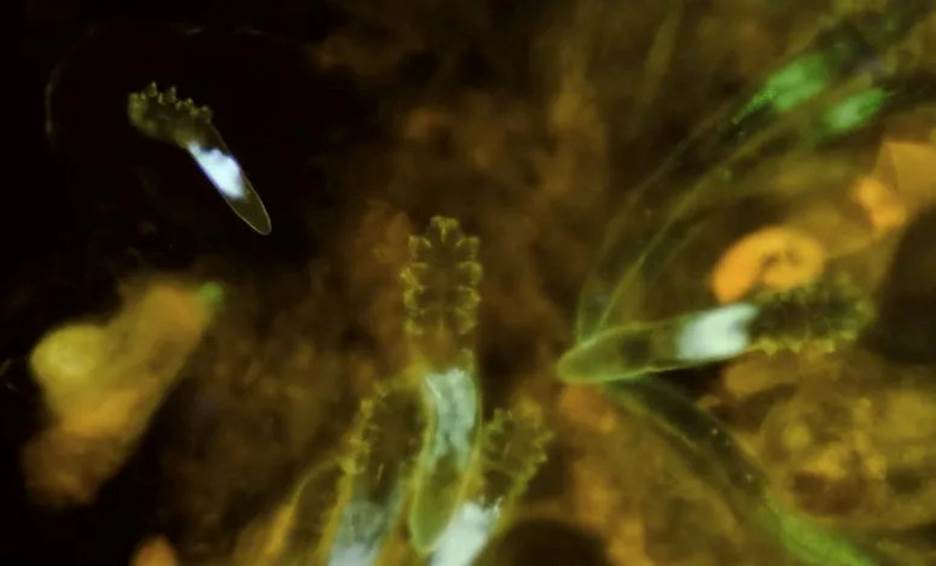
This photo shows several Demodex mites crawling around. - James Weiss/Journey to the Microscomsos
Face mites come out at night to mate
There are two species of Demodex mites found on humans — Demodex folliculorum, which prefer to reside in our hair follices, and Dermodex brevis, which hang out in the sebaceous glands connected to hair follicles, said Bruce Robinson , a dermatologist based in New York City.
They are mostly found on faces, especially Demodex folliculorum, but can also be found in other greasy parts of our bodies, Trautwein said, like ear canals, noses, and pubic areas.
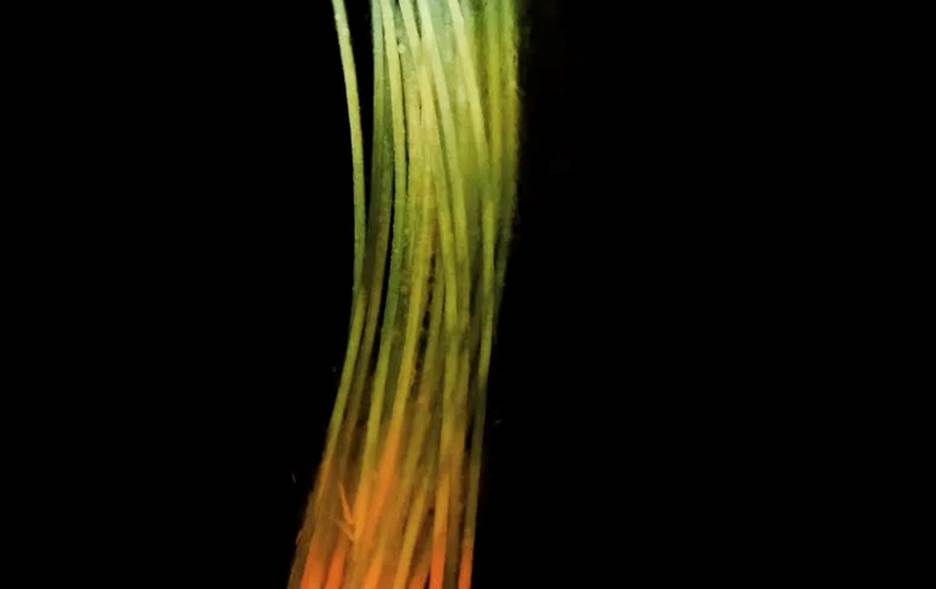
A zoomed in shot of human hair - James Weiss/Journey to the Microscomsos
Demodex mostly stay in your pores except at night when they emerge to find other Demodex to mate with.
"They crawl around on your face, having a great time visiting their friends in other hair follicles," Robinson said.
After mating with other mites, the female Demodex go back to your pores to lay their eggs, usually about 15-20 at a time that hatch in three to four days .
Males live only a few weeks and then die and decompose in the hair follicles or sebaceous glands. Females, however, can live up to 70 days , and lay as many as 100 eggs over their lifespan.
Demodex face mites are harmless to humans
The thought of hundreds of mites crawling around your face at night might give you the creeps, but for the most part, these tiny animals cause no harm to humans and can actually help balance the skin microbiome.
"The good thing about the Demodex mite is that he's our friend," Robinson said. "In most cases, he's just chewing up dead skin and getting rid of it, and also getting rid of that excess oil we don't need."
Too much oil on the face can cause acne and other skin conditions. So really these mites are doing us all a favor.
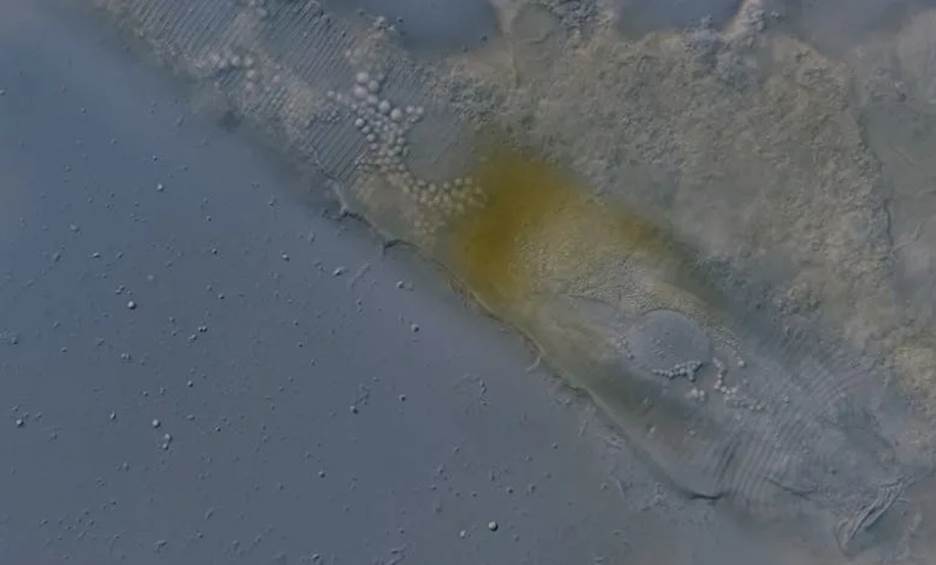
Here you can see the tiny balls of oil in the Demodex's intestinal tract from eating human sebum - James Weiss/Journey to the Microscomsos
On the flip side, in some cases, too many Demodex mites can cause skin irritation and contribute to chronic skin problems, like Rosacea , Robinson said.
This is more common in people with weakened immune systems that can't keep the population of Demodex mites under control.
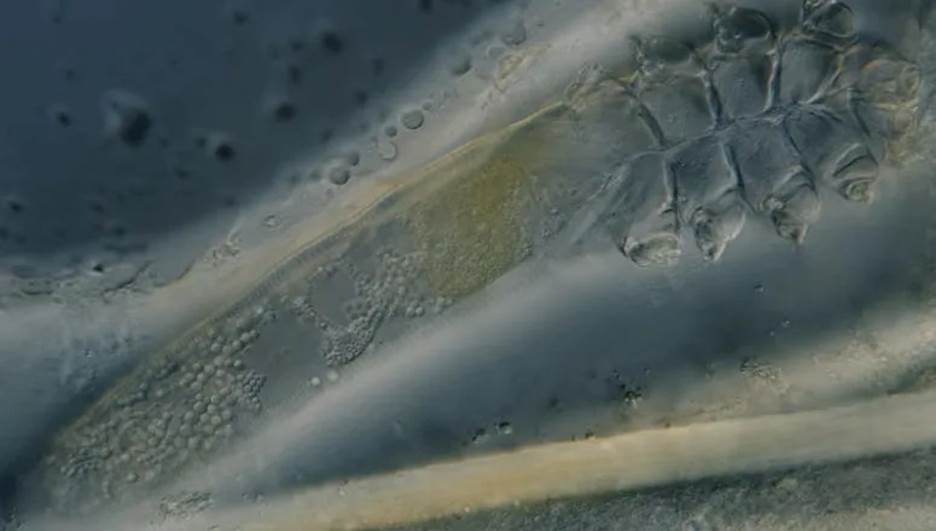
Here you can see a closeup of both halves of the Demodex's body, including the balls of oil in the mite's gastrointestinal organs - James Weiss/Journey to the Microscomsos
You can't get rid of face mites, and you shouldn't want to
Because Demodex mites live inside your pores, it's nearly impossible to scrub them out , Robinson said. But even if you could, you probably wouldn't want to.
"There is a harmony in the skin, good types of bacteria and microorganisms, and if you disturb that harmony then you can sometimes create other problems," Robinson said. "So, I wouldn't advocate for getting rid of something unless it is causing other issues."
753For Trautwein, these tiny creatures tell an important story about the history of humanity and our connection to all other animals.
"I think a major misconception people have is that humans are somehow not part of the natural order," Trautwein said. "We think we are distinct and we can separate ourselves from nature and other animals, but that isn't the case."
Our face mites are a testament to that.
"We're just out here like the rats and the dogs; we all have these mites," she said. "We're all just part of this ancient mammalian heritage." – Business Insider

